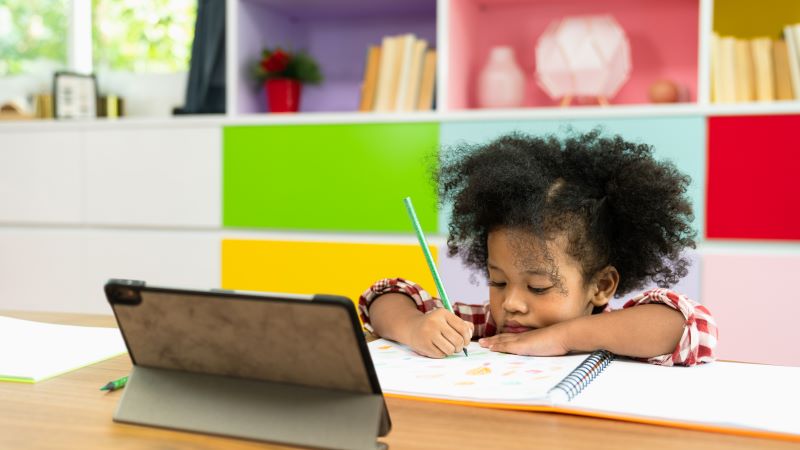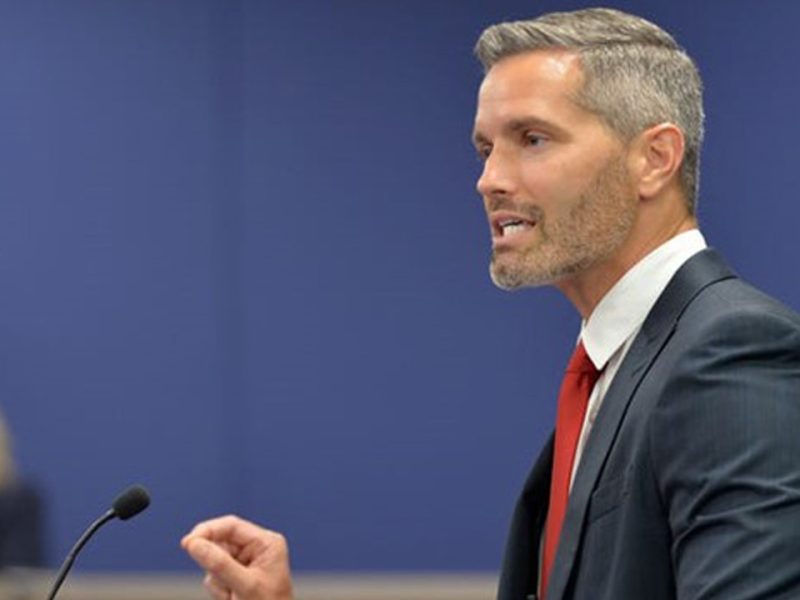More Schools Reopen, But Students of Color Still Learning Remotely
Improvements in the reopening landscape overshadow a stubborn racial gap in which more than half of students of color are still receiving a remote-only education.
U.S. News | by Lauren Camera | May 6, 2021
Nearly 90% of schools offered some type of in-person learning in March, half were fully reopened, and the percentage of schools offering only virtual instruction was cut in half, according to the latest data from the Education Department. But the significant improvements in the reopening landscape overshadow a stubborn racial gap in which more than half of students of color are still receiving remote-only education compared to less than a quarter of their white peers.
“We are seeing higher percentages of students enrolled in full-time, in-person learning, though there are still gaps,” James “Lynn” Woodworth, National Center for Education Statistics commissioner, said. “While the number of students learning only through remote instruction is dropping overall, most Black, Hispanic and Asian students are still not attending school in person at all.”
The latest tranche of data on how students in fourth and eighth grades received education during March was collected by the Institute of Education Science and the National Center for Education Statistics between April 14 and April 27 from more than 4,000 schools. The data is being collected monthly throughout the remainder of the school year so that policymakers have a better understanding of which communities were hit hardest by the pandemic and which students will need the most academic, social and emotional support upon returning to classrooms.
The monthly snapshot shows that 88% of schools surveyed with a grade four and 89% of schools surveyed with a grade eight offered some type of in-person learning during March – though that could mean anything from being open full time, five days a week for all students to operating on a hybrid schedule where students receive in-person instruction only one or two days per week. The latest figures represent a 10 percentage point jump in both categories of schools.
More than half of the schools surveyed offered in-person instruction, full time, five days a week to all students – a 5 percentage point increase in both schools with a grade four and schools with a grade eight. Notably, only 12% of schools with a grade four and 11% of schools with a grade eight offered remote-only instruction – down by roughly half.
“The changes since we began the school survey are significant,” Peggy Carr, associate commissioner of the assessment division at the National Center for Education Statistics. “It is a major improvement that the percentage of schools offering remote-only instruction has been cut in half since last month.”
But the data told another story as well – a story of the challenges schools face in welcoming all students back to the classroom full time, especially for students of color.
While the vast majority of schools offered fourth graders an in-person option, only 65% of them chose an in-person option – though that does represent an 8 percentage point increase since February. In total, just 44% of fourth graders were enrolled full time, in person.
The results were similar for eighth graders: Only 58% of them chose an in-person option – up 5 percentage points since February. In total, just 33% of eighth graders were enrolled full time, in person.
Student groups in both grades posted increases in the percentage of students enrolled in full-time, in-person instruction, but a larger proportion of white students continued to be enrolled full time, in person compared to their Black, Hispanic and Asian peers.
According to the March data collection, 31% of Black students, 30% of Hispanic students and 15% of Asian students received full-time, in-person instruction compared to 51% of white students. And 49% of Black students, 50% of Hispanic students and 67% of Asian students received remote-only instruction compared to 21% of white students.
Schools in cities were significantly less likely to be open full time for all students than suburban or rural schools and were also significantly more likely to be all remote. In Washington, D.C., for example, 87% of fourth-grade students and 93% of eighth-grade students were still learning entirely remotely in March.
“It is encouraging to see that many more schools around the country are reopening classroom doors,” Mark Schneider, the director of the Institute for Education Sciences, said. “The survey provides evidence that we have a long road ahead to recovering from the educational disruption students experienced over the last year.”
“Too many students were falling behind even before the pandemic,” Schneider said. “[We’re] focused on ensuring that every lesson we learn about recovering from the pandemic will be applied to remedy the dangerous, pre-existing downward trend among our nation’s lowest-performing students.”[
Education Secretary Miguel Cardona applauded the improvement in schools offering in-person learning but said he won’t be satisfied until 100% of schools are open – a mantra he’s increasingly embraced since he took office in February. Earlier this week, he said he’s prepared to increase oversight on school districts that do not offer students the ability to attend school in person five days a week beginning next school year.
“We are still seeing a much lower percentage of Black, Hispanic, and Asian students enrolled in full time in-person learning compared to their White counterparts,” he said in a statement. And even when offered in-person options, many Black, Hispanic, and Asian students, as well as multilingual learners and students with disabilities, are still learning fully remote.”
“At the national and local level, we must act with urgency and bring every resource to bear to get more schools reopened full-time this spring and address the inequities that continue to persist in our classrooms and communities.”






